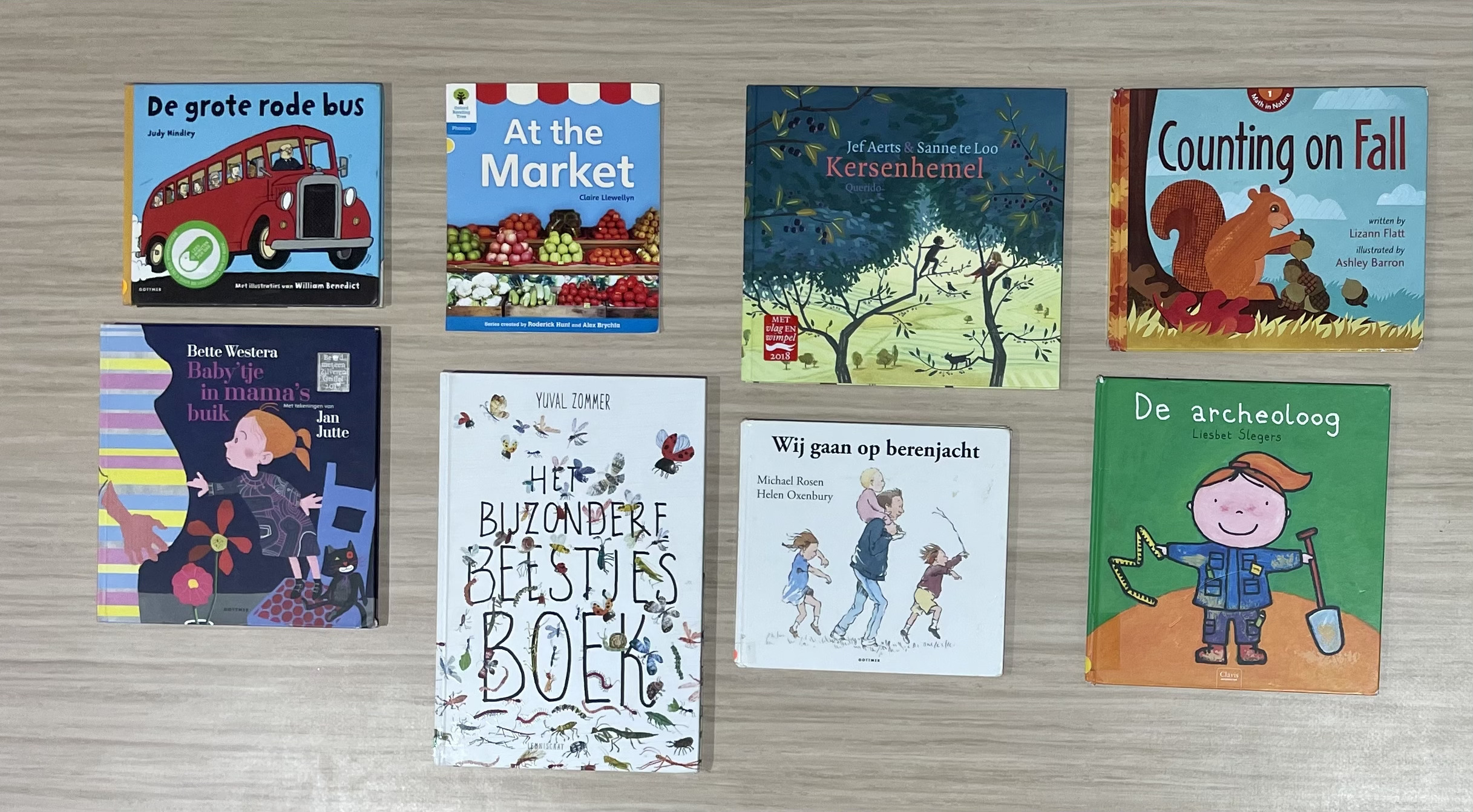Would you rather listen to this article via a (AI-generated) podcast? Then click here!
Every parent knows: spending time with your children is both wonderful and challenging at the same time. One of the favorite activities of many parents is reading aloud. Reading aloud provides peace, offers the opportunity to introduce or discuss certain topics, provides a moment of connection and at the same time you are also working on language enrichment! Reading aloud is always a good idea, but what do you read aloud?
Within the Montessori vision there are clear guidelines when it comes to offering books. There are things to keep in mind, both for the way in which they are offered and when choosing suitable books.
Realism
Children up to the age of 6 are in a phase in which they are busy understanding the world around them. The young child cannot yet distinguish well between fantasy and reality. That is why they are best off with books about ‘real things’ (non-fiction) or stories about things that could really have happened. For example, consider books that show animals in their natural habitat, or books that explore the daily lives of people from different cultures and professions.
Why does something as exotic as a red-eyed tree frog exist, but not an elf? How is a child supposed to make that distinction? Books about animals that drive cars or are fantasy creatures, however fun they may be, are therefore not suitable for this age group.
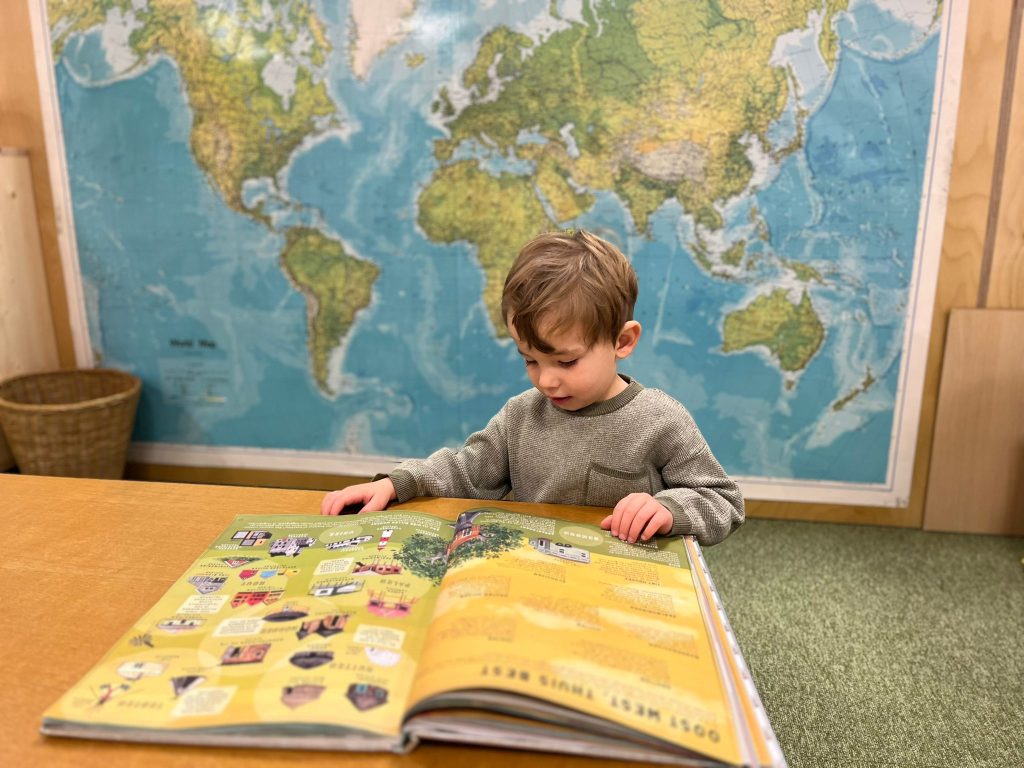
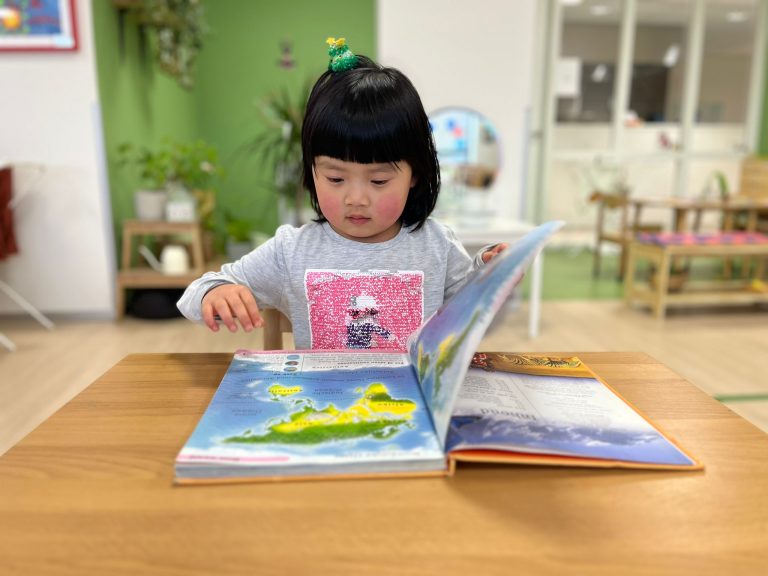
Rich language
This applies not only to how we talk to our children ourselves, but also to the books we read to them. We offer language that we want children to use. So “car” instead of “tootoot” and “pain” instead of “owie”.
You don’t have to avoid more complicated sentence structures and long, challenging words either: young children are used to sometimes not knowing a word or not fully understanding a sentence. Choose books that use poetic or descriptive language, introducing words that the child may not yet know. For example, instead of saying “the sun is bright,” a book might say “the sun shone with a golden glow.”
Use these moments to discuss and learn new words together with your child. Young children are in a sensitive period for language and absorb new words as if it were nothing. Let’s make good use of this and tailor our offerings to this.
Aesthetics
One of the Montessori principles is beauty. Something that is beautiful and well-cared for is attractive. This is why our classrooms are furnished with care and our materials look so inviting. We also look for this in books: beautiful illustrations, photos, special design and use of color make books the works of art that we want to offer.
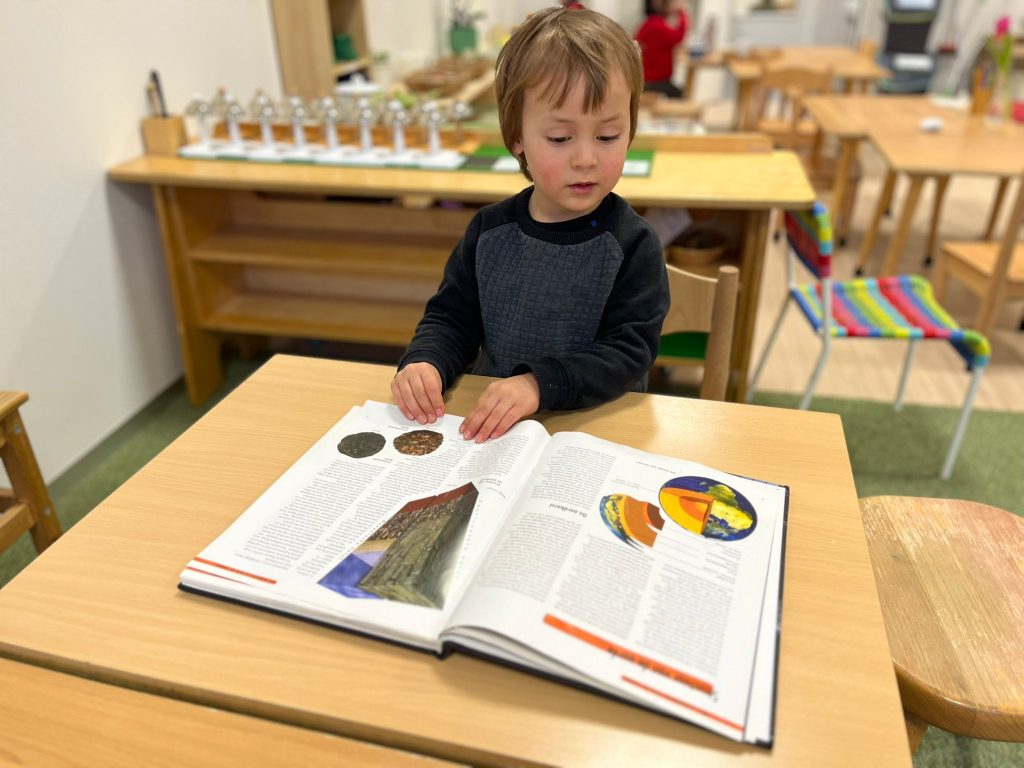
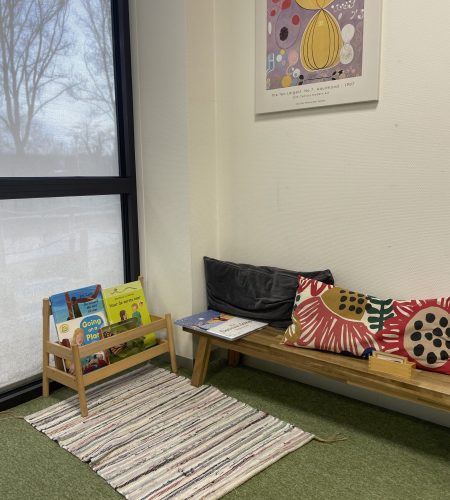
Handling books
The Montessori principle of respect for the environment also extends to books. A beautifully designed book invites children to handle books respectfully. Parents can play an important role in teaching children how to hold a book correctly, turn pages carefully and keep books in a fixed place.
This not only strengthens motor skills, but also the sense of responsibility and care. It is a valuable lesson: the child learns to handle books carefully, to put them away neatly and to read with attention. This makes the experience of reading something special.
For example, make it a ritual to put books away neatly together after reading. Make sure that children have access to a special bookshelf at their height, so that they can pick up and put books back themselves.
And then the last, but certainly not least tip: choose books that you enjoy yourself. Your enthusiasm as a reader is extremely important for the reading moment. In addition, we know how much children at this age love repetition… So choose something that you will not get tired of quickly!

